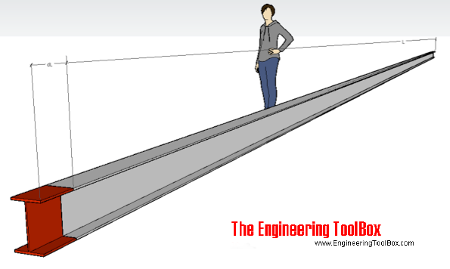Linear Thermal Expansion: Formula, Coefficients & Calculator
Online linear temperature expansion calculator.
When an object is heated or cooled, its length changes by an amount proportional to the original length and the change in temperature. The linear thermal expansion - the change in length - of an object can be expressed as
dl = L0 α (t1 - t0) (1)
where
dl = change in object length (m, inches)
L0 = initial length of object (m, inches)
α = linear expansion coefficient (m/moC, in/inoF)
t0 = initial temperature ( oC, oF)
t1 = final temperature ( oC, oF)
The final length of the object can be calculated as
L1 = L0 + dl
= L0 + L0 α (t1 - t0) (2)
where
L1 = final length of object (m, inches)
Note! - linear expansion coefficients for most materials varies with temperature .
Example - Expansion of Copper, Carbon and Stainless Steel Pipes
For wider temperature ranges - calculate for smaller spans and integrate the results.
Online Thermal Linear Expansion Calculator
Linear Temperature Coefficients - α - for some common metals
- aluminum : 0.000023 (m/moC) (23 μm/moC)
- steel: 0.000012 (m/moC) (12 μm/moC)
- copper: 0.000017 (m/moC) (17 μm/moC)
- more coefficients ..
- more metals ..
Example - Expansion of an Aluminum Beam

An aluminum construction is designed for temperatures ranging -30 oC to 50 oC . If a beam's length is 6 m when assembled at 20 oC - the shortest final length of the beam at minimum temperature -30 oC can be calculated as
L1 = (6 m) + (6 m) (0.000023 m/moC) ((-30 oC) - (20 oC))
= 5.993 m
The longest final length of the beam at maximum temperature 50 oC can be calculated as
L1 = (6 m) + (6 m) (0.000023 m/moC) ((50 oC) - (20 oC))
= 6.004 m
Superficial Expansion
The amount by which a unit area of a material increases when the temperature is raised by one degree is called the coefficient of superficial (area) expansion .
Cubic Expansion
The amount by which a unit volume of a material increases when the temperature is raised by one degree is called the coefficient of cubic expansion .



